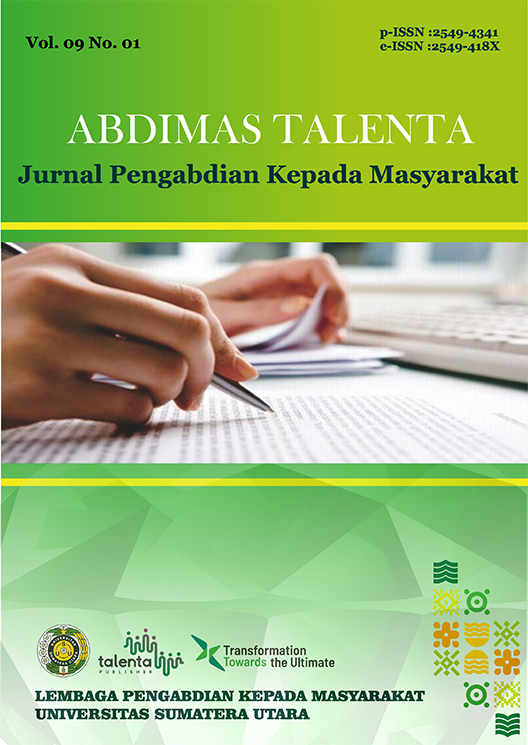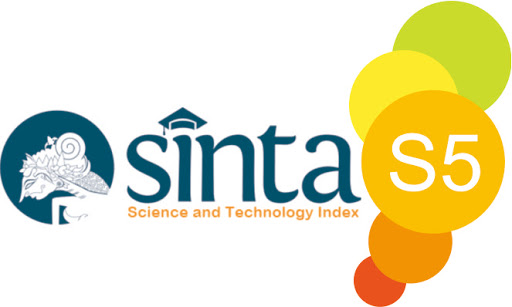Mangrove Nursery as Environmental Recovery Efforts in Aquaculture Pond Area, Utan Sub-District, Sumbawa
DOI:
https://doi.org/10.32734/abdimastalenta.v9i1.13457Keywords:
Aquaculture Pond Area, Environmental Recovery, Coastal Area, Mangrove NurseryAbstract
Geographically, the Utan sub-district is located in the coastal region of Sumbawa Regency, with abundant fisheries and marine potential. One of the potentials in the Utan sub-district is shrimp farming. Meanwhile, the management of natural resources in coastal forest areas so far tends to be less improved; this is due to various reasons, such as the lack of public awareness of the importance of coastal greenery and maintenance of existing coastal forests. Through the mangrove nursery program as an effort to restore the environment in the pond cultivation area, in Utan District, Sumbawa, it is hoped that it can raise awareness and the community's active role in the importance of a healthy environment. The results show that his community service succeeded in forming mangrove farmer groups, fostering mangrove farmer groups by conducting periodic education, and building mangrove nurseries. This mangrove nursery is managed directly by a group of mangrove farmers and has succeeded in producing 2,500-4,000 mangrove seedlings and successfully marketing them. In conclusion, this community service activity was successfully carried out and proved to improve farmers' welfare around the ponds. In addition, with this mangrove nursery, the community can contribute to the planting process so that a lot of carbon is absorbed in the atmosphere so that the air quality in the Sumbawa environment is of high quality. This means that the economy, society, and environment will be sustainable.
Downloads
Downloads
Published
Issue
Section
License
Copyright (c) 2024 ABDIMAS TALENTA: Jurnal Pengabdian Kepada Masyarakat

This work is licensed under a Creative Commons Attribution-ShareAlike 4.0 International License.
The Authors submitting a manuscript do so on the understanding that if accepted for publication, copyright of the article shall be assigned to Jurnal Abdimas TALENTA as well as TALENTA Publisher Universitas Sumatera Utara as the publisher of the journal.
Copyright encompasses exclusive rights to reproduce and deliver the article in all forms and media. The reproduction of any part of this journal, its storage in databases and its transmission by any form or media, will be allowed only with written permission from Jurnal Abdimas TALENTA.
The Copyright Transfer Form can be downloaded here.
The copyright form should be signed originally and sent to the Editorial Office in the form of original mail or scanned document.












